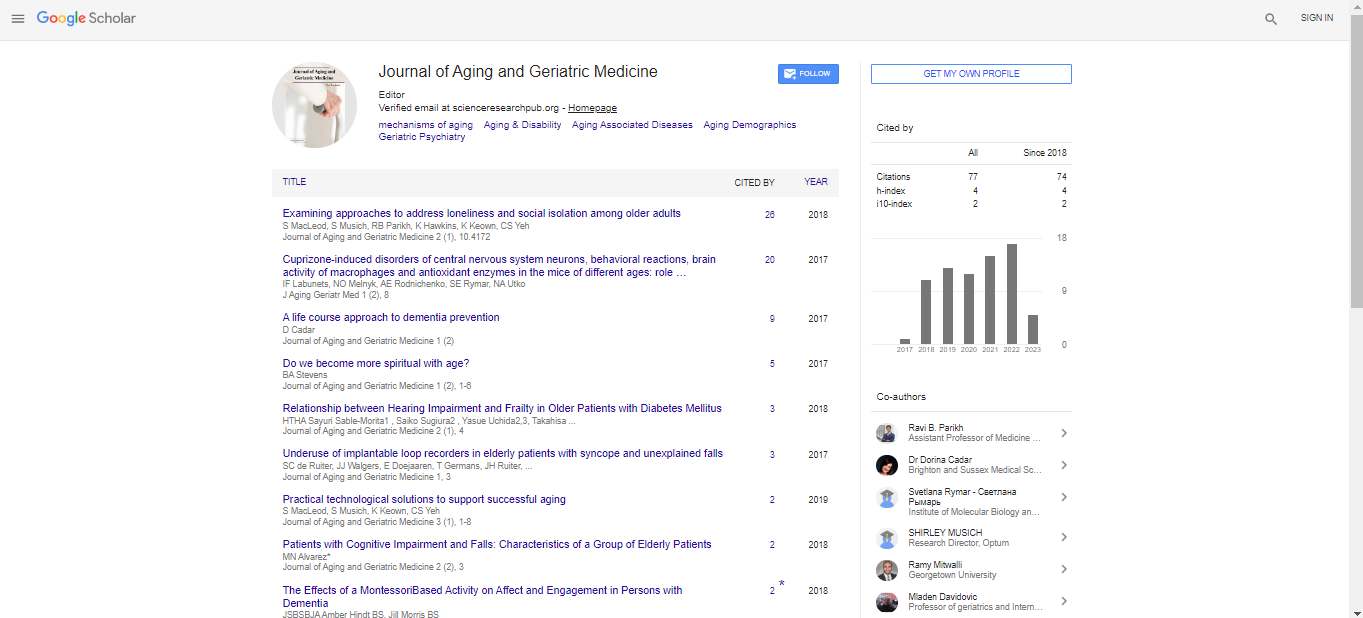Editorial, J Aging Geriatr Med Vol: 5 Issue: 7
Assessing Health Literacy and Stroke Symptomatology in Older Adults
Amy K Chesser*
Department of Public Health Sciences, Wichita State University, Kansa, USA
*Corresponding author: Department of Public Health Sciences, Wichita State University, Kansa, USA Tel No: (316) 978-3145; Email: amy.chesser@wichita.edu
Received date: July 05, 2021; Accepted date: July 20, 2021; Published date: July 27, 2021
Abstract
In organisms referred to as eukaryotes, DNA is discovered inner a unique region of the cell called the nucleus. Due to the fact the cellular could be very small, and due to the fact organisms have many DNA molecules in step with mobile, every DNA molecule have to be tightly packaged. This packaged shape of the DNA is referred to as a chromosome. At some stage in DNA replication, DNA unwinds so it is able to be copied. At other times within the mobile cycle, DNA additionally unwinds in order that its commands may be used to make proteins and for different organic techniques. But during cell division, DNA is in its compact chromosome form to enable switch to new cells. Researchers talk to DNA found inside the cellular's nucleus as nuclear DNA. An organism's whole set of nuclear DNA is known as its genome.
Keywords: Assessing Health Literacy
Introduction
In organisms referred to as eukaryotes, DNA is discovered inner a unique region of the cell called the nucleus. Due to the fact the cellular could be very small, and due to the fact organisms have many DNA molecules in step with mobile, every DNA molecule have to be tightly packaged. This packaged shape of the DNA is referred to as a chromosome. At some stage in DNA replication, DNA unwinds so it is able to be copied. At other times within the mobile cycle, DNA additionally unwinds in order that its commands may be used to make proteins and for different organic techniques. But during cell division, DNA is in its compact chromosome form to enable switch to new cells. Researchers talk to DNA found inside the cellular's nucleus as nuclear DNA. An organism's whole set of nuclear DNA is known as its genome. Besides the DNA positioned inside the nucleus, people and different complicated organisms actually have a small amount of DNA in mobile structures called mitochondria. Mitochondria generate the electricity the cellular wishes to function well. In sexual replica, organisms inherit half of their nuclear DNA from the male determine and half from the girl parent. but, organisms inherit all of their mitochondrial DNA from the girl determine. This takes place due to the fact most effective egg cells, and now not sperm cells, keep their mitochondria during fertilization.
DNA is fabricated from chemical constructing blocks known as nucleotides. those building blocks are made from 3 parts: a phosphate group, a sugar institution and one among four types of nitrogen bases. To form a strand of DNA, nucleotides are linked into chains, with the phosphate and sugar businesses alternating. Transformed, The four sorts of nitrogen bases determined in nucleotides are: adenine (A), thymine (T), guanine (G) and cytosine (C). The order, or series, of these bases determines what organic commands are contained in a strand of DNA. As an instance, the sequence ATCGTT might educate for blue eyes, while ATCGCT may instruct for brown.
The entire DNA preparation e-book, or genome, for a human carries about 3 billion bases and about 20,000 genes on 23 pairs of chromosomes. DNA includes the commands wished for an organism to develop, live to tell the tale and reproduce. To carry out those capabilities, DNA sequences should be converted into messages that may be used to provide proteins, which are the complex molecules that do maximum of the paintings in our bodies. Every DNA collection that carries instructions to make a protein is known as a gene. The size of a gene may also vary greatly, ranging from about 1,000 bases to one million bases in humans. Genes best make up approximately 1 percentage of the DNA series. DNA sequences outside this 1 percentage are involved in regulating when, how and what sort of a protein is made. DNA's commands are used to make proteins in a two-step manner. First, enzymes examine the statistics in a DNA molecule and transcribe it into an middleman molecule referred to as messenger ribonucleic acid, or mRNA. Next, the information contained within the mRNA molecule is translated into the "language" of amino acids that are the constructing blocks of proteins. This language tells the cellular's protein-making machinery the suitable order in which to link the amino acids to supply a specific protein. That is a prime assignment due to the fact there are 20 styles of amino acids, which can be positioned in many extraordinary orders to form a wide sort of proteins. The Swiss biochemist Frederich Miescher first observed DNA within the past due 1800s. But almost a century passed from that discovery till researchers unraveled the shape of the DNA molecule and realized.
 Spanish
Spanish  Chinese
Chinese  Russian
Russian  German
German  French
French  Japanese
Japanese  Portuguese
Portuguese  Hindi
Hindi 